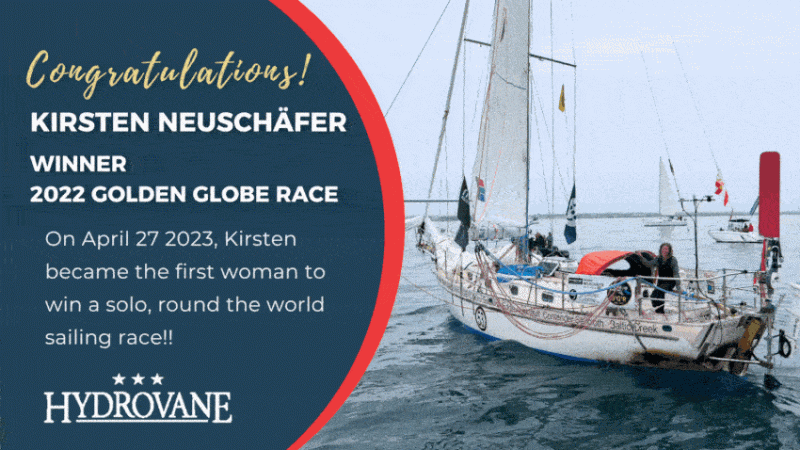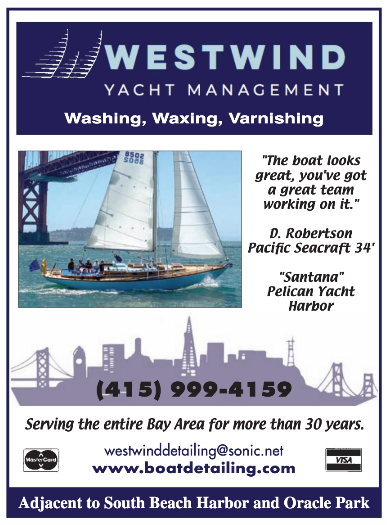
Racing Through the Mexico Cruising Season
For most Californians, Mexico is a dream cruising destination. However, upon arrival in Banderas Bay you’ll find there’s a lively racing scene organized by the very active Vallarta Yacht Club. January kicks off the prime racing season, starting with the two-weekend Vallarta Cup. Charity Palmetier sent a few photos from the competition, where cruising boats join local racers in dodging whales and rounding marks.
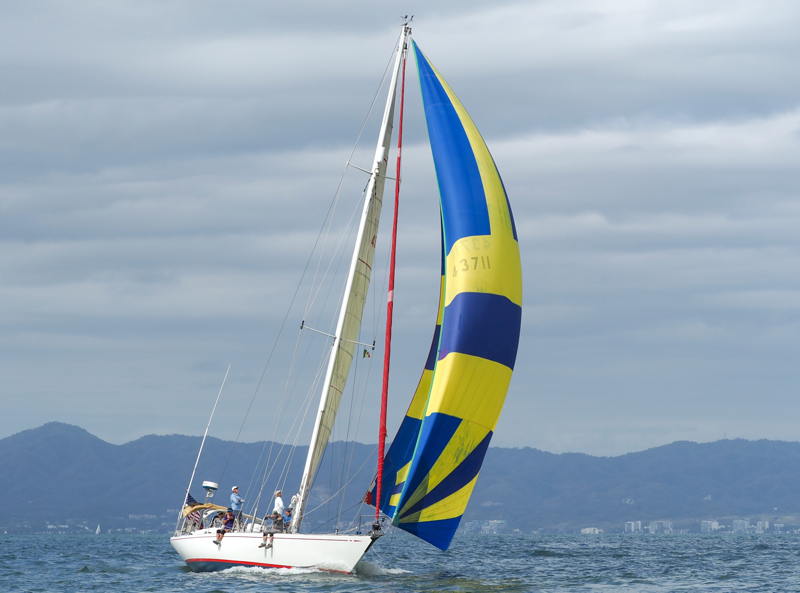
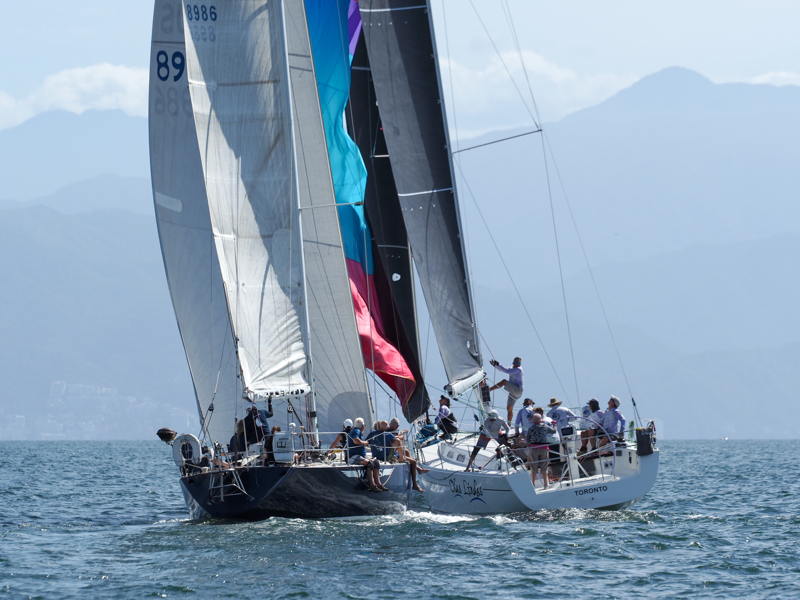
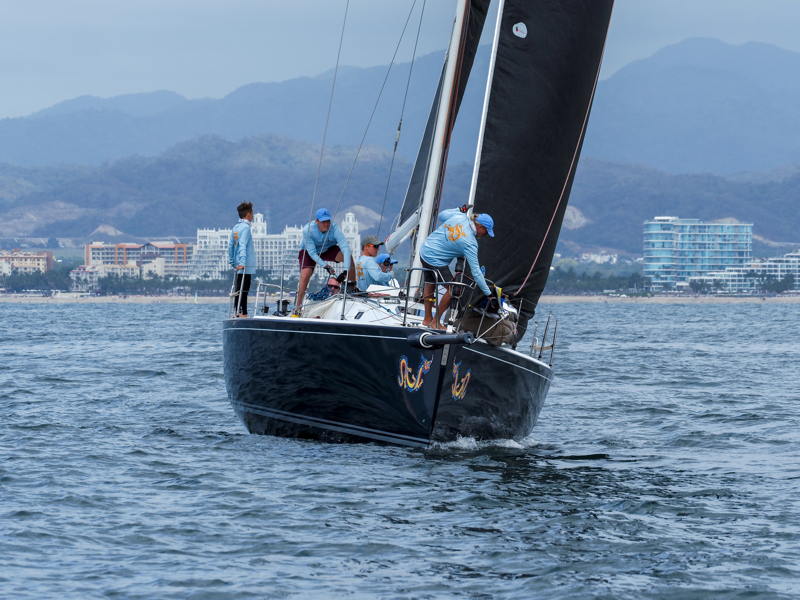
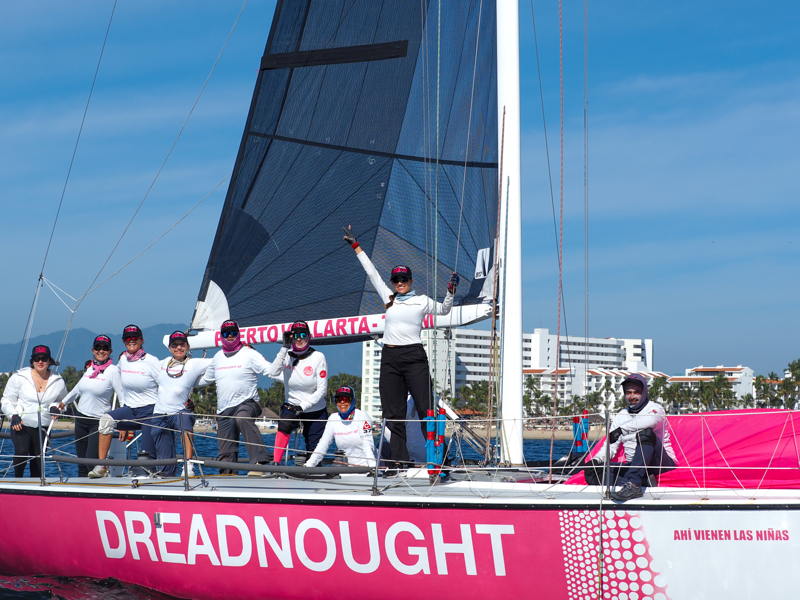
Both the January 11/12 and 18/19 weekends produced the region’s mostly sunny, warm weather with steady afternoon breezes for the four days of racing. The Multihull class was won by the Hobie 16 Palidin. In the Multihull Division. First in the Cruising Division was Gregory Reaume’s J/37 Beep Beep followed by Great Fun, in second. took first over Lost Dragon in the Performance Division. Linda Sweet and crew took first in the Performance Division with her Variana 44 Olas Lindas.
Next on the Vallarta Yacht Club racing calendar is the WesMex International Small Boat Regatta on February 20-23, followed by the Banderas Bay Regatta on March 18-22. You can find more on each event here.
[Ed: This story has been updated with the correct results.]
‘Tis the Season — ‘Latitude’ Hats Find New Homes
We’d like introduce you to Ken Agustin. Ken is a sailor from Pleasanton who recently scored himself a new Latitude 38 hat. Ken joins Ferris Wills from Berkeley who also won a Latitude 38 hat recently. Ken’s hat, by way of a Golden Ticket, was nestled in the pages of the January issue that Ken had picked up from Club Nautique in Sausalito.
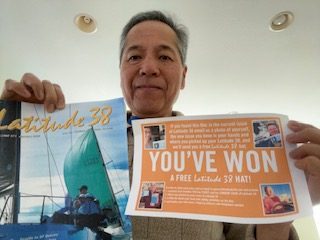
Ken describes himself as an avid sailor, and holds his US Sailing CPM (Coastal Passage Making) rating. He doesn’t own a boat right now, but charters boats out of Club Nautique, where he’s been a member for 20 years. “I’ve skippered hundreds of times in the S.F. Bay and offshore as well,” he tells us.
Ken’s sailing life began when he was stationed at Langley Air Force Base, Virginia, in summer 1990. Over four consecutive weekends he learned to sail on 14-ft FJs, Sunfish, and Lasers.
“After finishing the classes, I chartered 24-ft Catalinas at Fort Monroe and sailed often around Hampton Roads, Norfolk, and parts of the Chesapeake Bay.” He enjoyed himself so much that he bought a 26-ft Chrysler sloop, Windancer, which he raced and cruised.
“I owned Windancer for about three years. Unfortunately, I had to sell it as I was due to be stationed in Albuquerque, NM.”
One of the things Ken loves most about sailing is being out in nature, “especially out on the water.
“I love meeting new sailors and learning and gaining new knowledge about all aspects of sailing:
weather predictions, navigation, etc.,” he continues. “I enjoy the tranquility of being out on the water. All my troubles go away, and I’m at peace -— even just for that moment.”
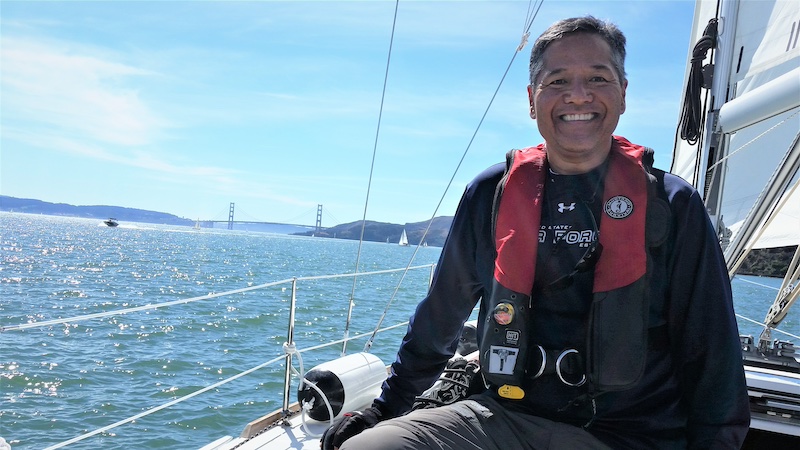
Ken tells us his most memorable sailing experience was when he first skippered a five-day voyage from Sausalito to Half Moon Bay and to Monterey and back. “I just passed my Coastal Passage Making certification. We chartered a 41-ft Jeanneau. I had a crew of four people who were good sailors but [had] never been offshore. It was a great challenge, as I was responsible for the safety of the crew and the boat. I think I passed as a skipper with flying colors, as we had lots of fun, and we made it back safely.”
If you want a chance to win yourself a new Latitude hat, as Ken did, make sure you pick up a Latitude 38 magazine at any of our distributors. Or, better still, ensure you get every issue by subscribing and having the magazine delivered to your mailbox each month. And if you can’t wait to win a Latitude hat, get one now from our swag store.
Steering the Dream With Hydrovane
Hydrovane is your best crew member: an independent self-steering windvane and emergency rudder/steering system … ready to go!
NOTICE: Public Hearing on Proposed Treasure Island Marina Replacement
Interested parties are invited to a hearing at the San Francisco Bay Conservation and Development Commission on Thursday, February 6, from 1 p.m. to 5 p.m., regarding the marina development proposed by the applicant, Treasure Island Enterprises, LLC, which is leasing the project area of Clipper Cove from the underlying property owner, the Treasure Island Development Authority (TIDA).
We’ve previously shared stories about potential developments on Treasure Island, including Treasure Island Sailing Center’s temporary relocation in anticipation of construction. This week’s conversation will revolve around the plan to remove the existing 108-slip marina and replace it with a new 168-slip marina. The current marina has an “average slip length of approximately 32 feet,” constructed upon 100 12-inch-diameter creosote-treated wooden piles. This will all be removed and replaced with slips averaging 55 feet and will include a 705-foot guest dock that will also function as “a floating wave attenuator.” The new marina will rest upon “138 new HDPE-wrapped steel guide piles, 20 and 26 inches in diameter.”
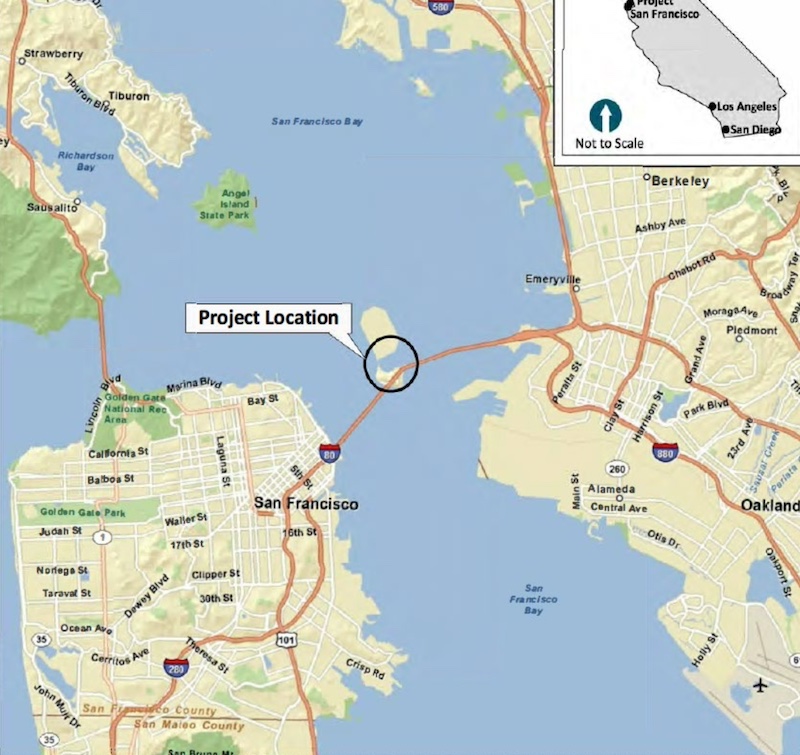
Sound great? There are, of course, questions that have been raised throughout the entire process of the application, one being the size of the marina and its impact on public accessibility to Clipper Cove and surrounds.
The Application Summary includes the following.
“During the project’s CEQA [California Environmental Quality Act] process, resulting in its approval by the San Francisco Board of Supervisors and approved lease in 2019, the permittee engaged with and was the recipient of significant public input on its design. Specifically, the Save Clipper Cove organization, spearheaded by the Treasure Island Sailing Center (TISC) and the Sierra Club, objected to a private marina negatively impacting existing uses of a unique well-protected open-water cove, including educational sailing programs and competitive sailing events held in Clipper Cove.”
In response, the project proposal was modified “by reducing the project footprint of the new marina to approximately one third, compared to the original proposal.”
The project applicants contend, “The proposed project would provide improved public access through providing a publicly accessible transient boat dock providing moorage at a nominal fee, which will allow for up to ten boats to be moored at a time along the eastern, external, side of Dock A, providing greater access to Clipper Cove to the general public boating community.”
On the environmental side, the proposal claims the piles for the floating docks will be “of adequate height to anticipate future sea level rise.” And regarding any impact on the Bay’s sea life, the considerations are as follows.
“Installation of new steel guide piles will be primarily by vibratory driver and then completed using an impact pile driver with a cushion block for the remaining three to five feet where necessary. Existing piles will be removed with the use of a vibratory hammer or other non-jetting processes.
“To reduce potential underwater noise impacts from pile installation on fish and marine mammals, the permittee will restrict pile driving to the in-water work window for salmonids for the San Francisco Bay, install only up to 8 piles per day, use a soft-start technique, and operate only a single diesel hammer at a time. The pile driving completion period is expected to be 18 to 35 days in duration.”
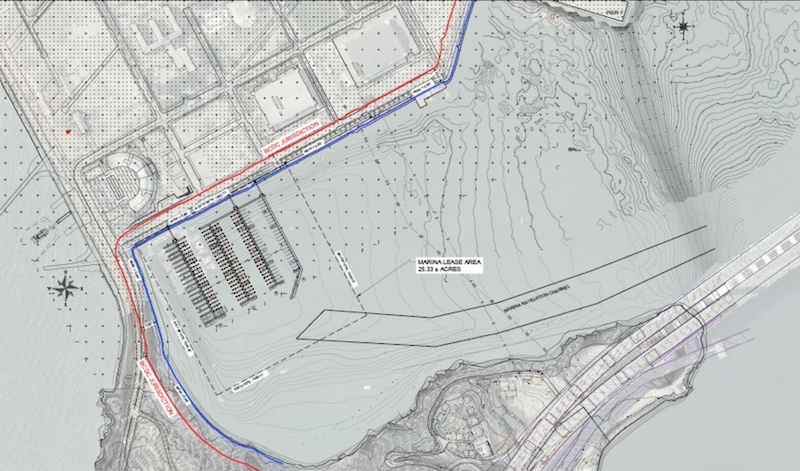
The above is only a brief summary, some notes on our understanding of the proposal. We encourage everyone to read the application (it’s only four pages) and form their own opinions. You can then attend the meeting forearmed and can share your thoughts on the proposal in accordance with the BCDC Virtual Commission Meeting Instructions — For Public, which include, “At the beginning of the meeting and for each agendized item at the public meeting, the BCDC Commission Chair will ask whether there are any requests for public comment on items not on the agenda.”
The meeting can be attended in person at the Metro Center, 375 Beale Street, 1st Floor Board Room, San Francisco, CA, (415) 352-3600; or at one of 12 teleconference locations; or via Zoom.
ARC Rally — Rescue at Sea
It was 3:17 a.m. when urgent pounding on my cabin door awoke me. “Mayday! Mayday! We have two. A man overboard and a boat’s taking on water!”
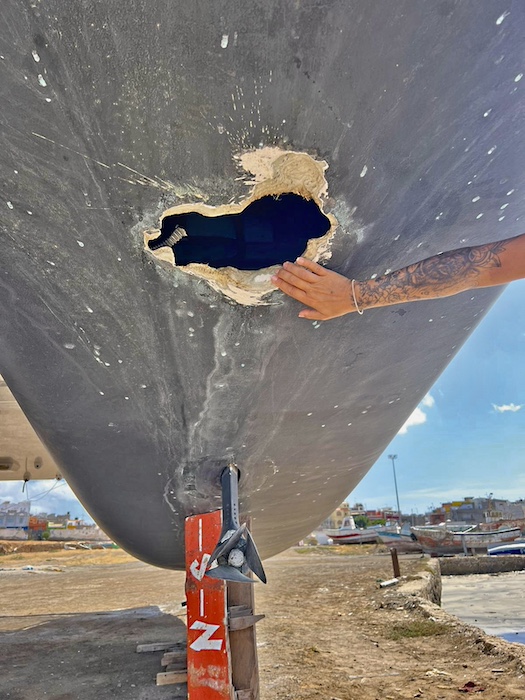
My bucket-list adventure of sailing across the Atlantic had started eight days earlier, on November 24, 2024. I and the ill-fated were among the hundreds of enthusiasts on the 140 boats that started the 38th running of the Atlantic Rally for Cruisers (ARC), which is organized by the U.K.-based World Cruising Club. It starts from Las Palmas, Gran Canaria, which is about 120 miles off the coast of Africa, and ends some 2,700 miles later in St. Lucia in the Caribbean.
I had entered into a bargain with my wife: In exchange for not buying a boat, she would support my sailing aspirations — but only aboard other people’s boats. So, using a website that connects boat owners and crew, I landed a position on Gerald and Christina Smith’s 1985 Jongert 20-meter ketch Cinderella di Sanremo. At 67 years of age, I had been worried that skippers would prefer a younger version of me, but it turns out that many boat owners are my contemporaries and it wasn’t an issue. Gerald was English, his wife was Swedish and Norwegian, and the other two crew were German and Maltese. I was the token American.
I arrived in Las Palmas a week early to help get the boat prepared and enjoy social events. Because Cinderella was 73 feet overall, we were placed on the “big boat” dock — the ones that can give you a bad case of boat envy. To our port was a Whitbread 70, and two boats to starboard was a Volvo 70, both around-the-world veterans. (The latter was to experience the man overboard.) There was the Oyster that came in XL and other beautiful boats. Then there were the boats I’m more used to sailing, those in the 40- to 50-ft range — Beneteaus, Leopards and even a 38-ft Hanse.
After six long days of preparing, repairing and provisioning, all 140 boats hit the start. It was a spectacle, with flags flying, horns blaring, and a couple hundred spectators cheering us on. We reciprocated with the Queen’s wave. We felt special.
Once Cinderella had crossed the starting line, we made the obligatory offering to Neptune: a splash of port. We sailed down the southeast side of Gran Canaria and got a great lift from an acceleration zone between islands. We had our big gennaker out and were making up to 10.4 knots in 20 knots of wind. As I went to sleep that night, I had visions of an easy, downwind, one-tack, 3,000-mile sail.
Westwind Yacht Management — Washing, Waxing and Varnishing
Westwind Yacht Management: Premiere Yacht & Fleet services for the San Francisco Bay Area.

